Are You A Vanguard? Applications Now Open
This is your first of three free stories this month. Become a free or sustaining member to read unlimited articles, webinars and ebooks.
Become A MemberDeborah Jennings lives in a house in East Baltimore with her daughter and granddaughter. When she first moved in nearly five years ago, she was working as a nursing support technician, helping to draw blood. Hours were long, but she was able to pay her bills. That changed two years ago, when she became disabled and had to stop working. Without a steady paycheck, 57-year-old Jennings has struggled to pay her rent, and each month, that means a trip to rent court.
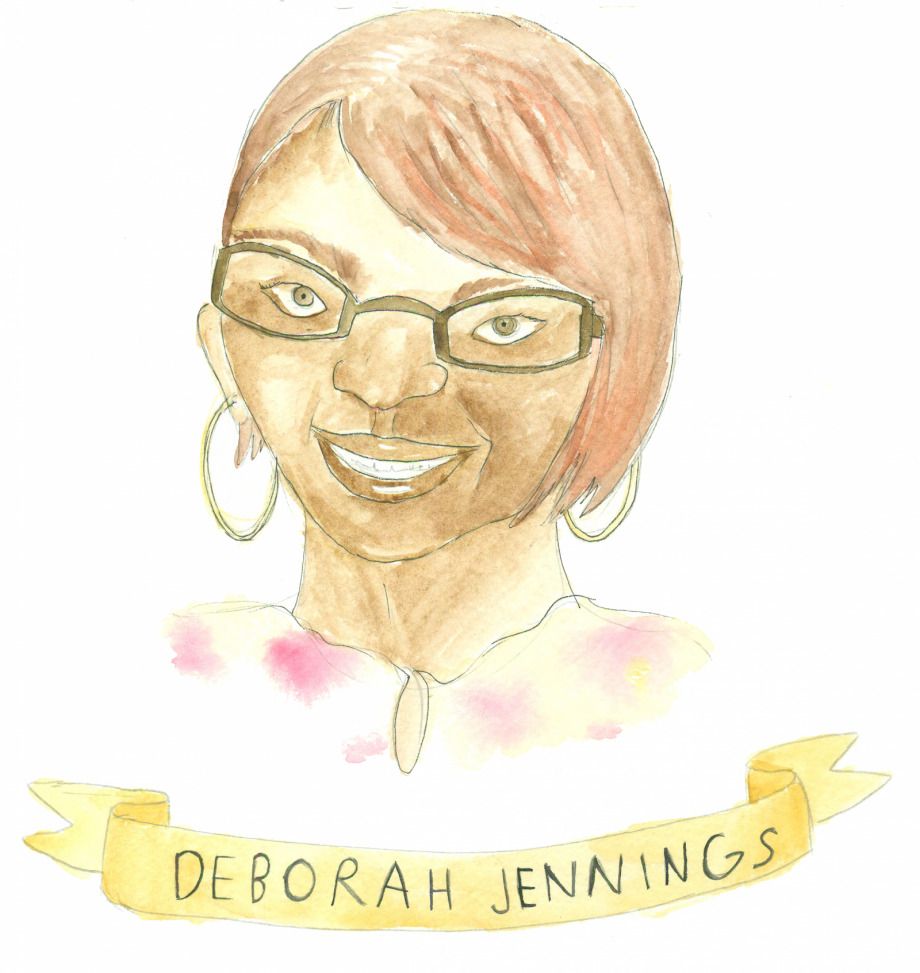
Each courtroom visit, the same complaints are made, the same issues described, and the same ultimatum given: Jennings must pay her rent or risk eviction. Although the conditions of her house are poor — the basement sink had water running for two months straight, paint hangs from her roof and water has settled in the ceilings — Jennings is in no position to negotiate. “You can start talking, but then the judges say, ‘I understand, but we’re here in reference to this rent, do you owe this rent?’ They don’t want to hear whether or not you have any issues,” Jennings says. “They don’t want none of that.”
“I’m not expecting to live here free,” she adds. “I said bear with me, you’re going to get your rent.”
Each year, Baltimore landlords file roughly 150,000 cases in rent court, which is housed in the District Court of Maryland. The city has 125,000 occupied rental units. Many tenants, like Jennings, are taken multiple times per year.
Despite its undeniable public impact, rent court remains one of city’s least transparent institutions. Any public records are hard to come by and in an era of metrics and open data, analysis of courtroom verdicts appears to be nonexistent.
“People know about it, but there’s no interest to understand why this keeps happening year after year,” says Zafar Shah, an attorney with the Baltimore-based Public Justice Center. “The whole system just does not function as it should.”
In the neighborhood of Oliver, where Jennings lives, nearly a third of families live below the poverty line, many of them on blighted blocks checkered with vacancy. Yet Oliver, along with other sections of Baltimore, is slowly beginning to see population trends reverse and new investment trickle in. With new residents and development come higher rents and more pressure for tenants like Jennings to pay up or get out.
“There is a lot of development in Oliver, a lot of new homeowners, but there are still a lot of people without a lot of money here,” says Darryl Dunaway, office manager and community organizer with the Oliver Community Association. “We hear about rent court all day. From 9 a.m. to 12, I am sending people down to 501 East Fayette Street for eviction prevention. I sent someone there this morning.”
Dunaway says that the community association and others like it around the city help as many people as they can each month, but there is only so much that can be done. “If you can’t pay one month, there is help. You come back next month and you are on your own,” he says.
Originally created to provide a nationwide model of justice for landlords and tenants, Baltimore’s housing court today serves as little more than a state-run rent collection agency, financed by taxpayers and the beleaguered renters themselves who pay court fees for each judgment ruled against them.
“The court system is not for the tenant,” says Jennings wearily. “It just becomes a money thing. It’s no longer about human beings.”

In 1936, the Baltimore Sun published a series of articles that illustrated some of the horrific conditions of Baltimore slums — where 40 percent of the city then lived. With the highest proportion of substandard housing among America’s big cities, local Baltimore officials moved to take action. But by 1941, unsatisfied with the city’s slow progress, some individuals formed the Citizens Planning and Housing Association to apply more pressure. What emerged in Baltimore — a campaign for new building and sanitation codes, and stronger mechanisms for enforcement — would eventually influence the wave of urban renewal across the country, as well as Dwight D. Eisenhower’s Federal Housing Act of 1954.
The Baltimore Plan, as it came to be known, was based on a model of setting — and vigorously enforcing — minimum housing standards. The hope was to one day clean up all of Baltimore’s slums; if some delinquent properties had to be removed, so be it. Besides beefing up the number of housing inspections, reformers also wanted to create a special housing court designed to enforce the new standards. Even in the 1950s, regular courts were fairly overwhelmed, and disputes like rental issues were simply low-priority cases. The idea was to create a new space where both landlords and tenants could come in and expect a fair and thorough hearing. The courts would hold landlords accountable to health and sanitation standards, while landlords could expect the backing of the court if tenants were damaging their property or failing to pay rent. Baltimore’s rental housing court would become the first of its kind in the country. Today, most cities have similar systems in place.
“It was supposed to be about fundamentally changing the way property relations work,” says Daniel Pasciuti, a sociologist at Johns Hopkins University who studies Baltimore’s rent court.
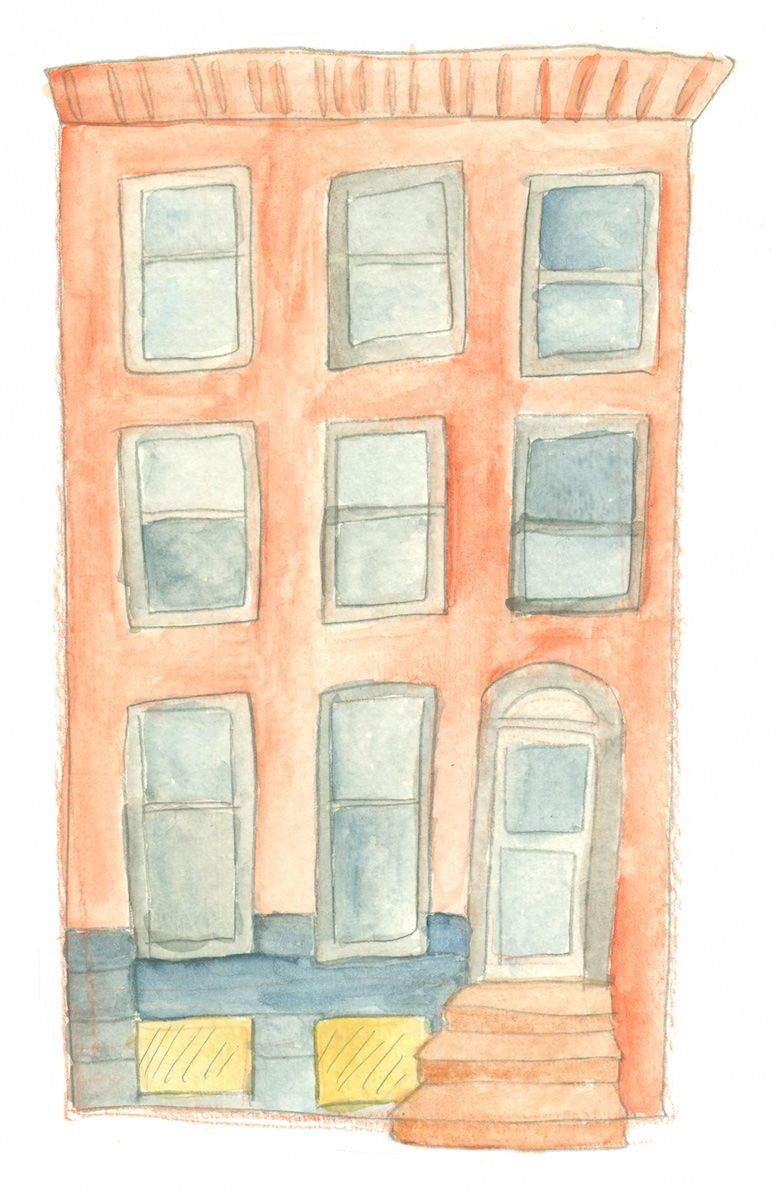
But in recent years, housing courts look less like the guardian against slum conditions imagined by New Deal-era advocates and far more like other municipal courts that target low-level offenders and focus disproportionately on the poor.
After visiting rent court in the 1990s, University of Maryland law professor Barbara Bezdek concluded that, beneath “the veneer of due process,” litigants “who are members of socially subordinated groups” are systematically excluded. Though rent court was originally meant to be an accessible space where tenants and landlords could speak directly to a judge without a lawyer, the reality is that the arrangement favors the landlords. Bezdek found that differences in speech, the effects of poverty and the unduly high hurdles tenants were asked to overcome to even raise a defense prevented them from being truly heard. All in all, Bezdek described the legal dynamics as “a charade.” In the two decades since, not much has changed.
On a typical day in rent court, the average number of scheduled cases ranges from 800 to 1,000. Shah says the court’s “dirty little secret” is that it depends on the overwhelming majority of summoned tenants to not show up — meaning default wins for the landlord — because there’s no way judges could ever hear as many cases as they schedule. Mark Scurti, associate judge at Baltimore City’s District Court, agrees they would not be able to handle as many cases as they schedule if all tenants were to appear. “It would put a tremendous strain on our current staffing and judges,” he says.
For tenants who do show up to court, it’s not much better. “The court really operates like a giant black box. I have a friggin’ Ph.D. and I’m sitting there like, if this were me and I was actually there [for a case], I would have no idea what’s going on,” says Pasciuti. “There’s no direction, there’s nobody there to explain anything to you.” While some legal aid groups try to offer assistance, their availability is minimal, and most tenants go in without professional help. On days with full dockets, a case can easily receive less than 30 seconds of judicial review.
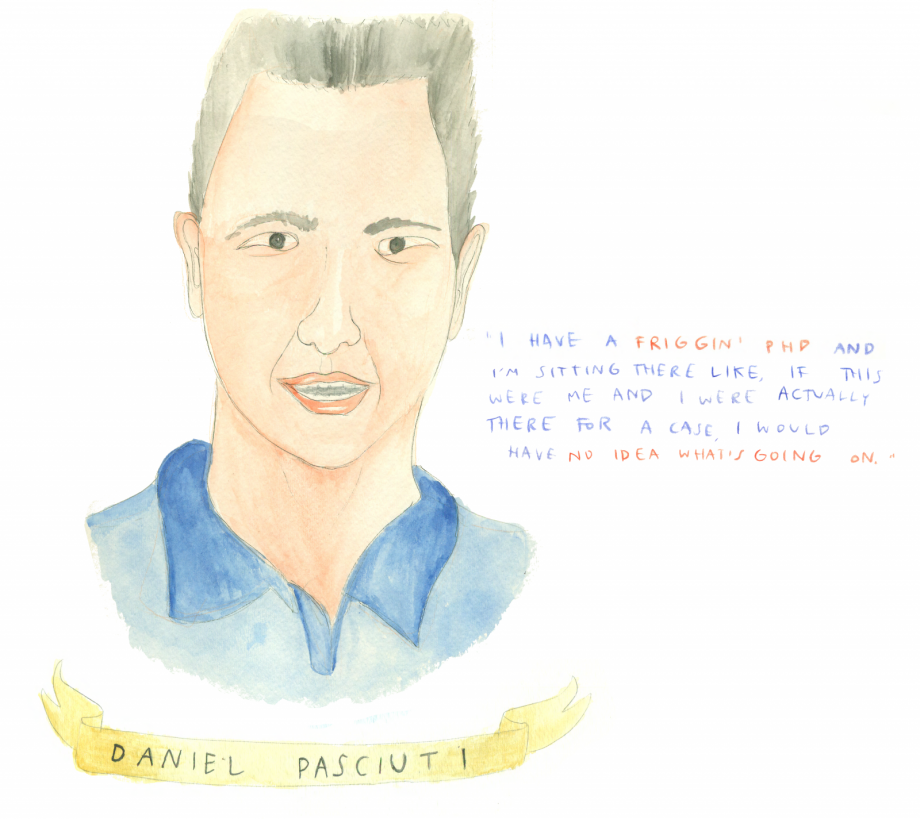
Rent court is one of the few courts in Maryland’s judiciary system for which no digitized records are available. Whereas all other court cases are filed online, no similar computer system has ever existed for these housing disputes; everything must be manually processed and gets filed away into a vault. Relatedly, no court records are available to determine things like the number of judgments ruled in the landlords’ favor, or how many times an individual tenant is brought to court annually. “I think those are critical numbers to know, and I’m all about watching statistics and watching trends,” says Scurti, who hopes the court will be included in a statewide electronic court filing initiative that is being rolled out over the next couple years. “Why we’ve never been electronic before, I don’t know,” he says. “I suspect it has to do with funding.”
Obtaining data on the number of evictions is similarly difficult. While the sheriff’s office tallies monthly eviction stats for rent court stakeholders to review, it does not make the data easily accessible to the public. It took several weeks for the city to agree to share with me that they had a total of 6,309 evictions in 2014. Housing advocates say the number has hovered around 7,000 evictions annually for the last 10 years. An Abell Foundation report published in 2003 found that the chances of eviction are greater if one rents in Baltimore than in comparable cities like Washington, D.C., Philadelphia and Cleveland.
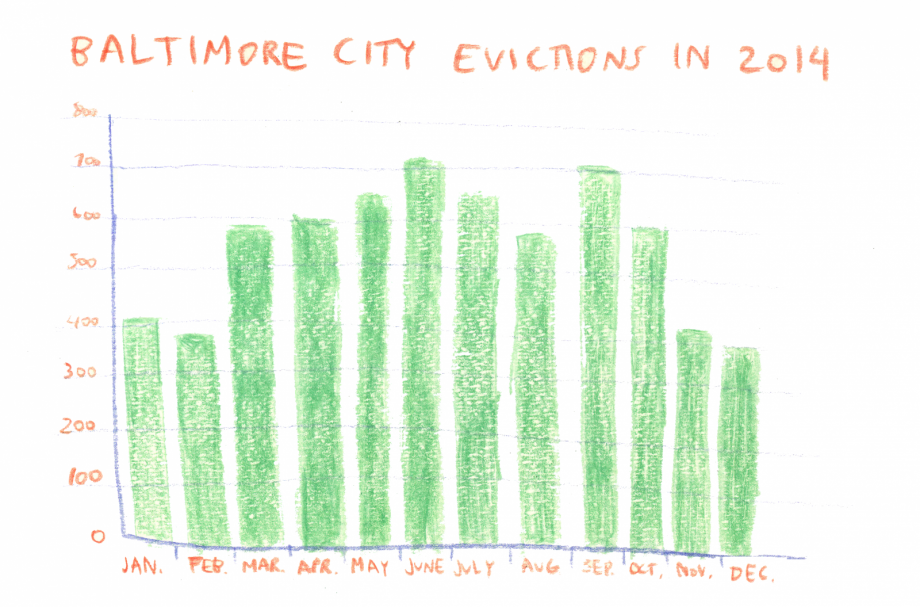
Rent court is easily one of the state’s speediest judicial proceedings. Landlords can file for trial a mere one day after rent is late, no matter what the reason. In other states, like New York, landlords must serve tenants with a “rent demand” that gives them three or five days to pay overdue rent before an eviction case is started. New York tenants who do not receive these notices can raise that as a defense in court, says Jenny Laurie, executive director of Housing Court Answers. There is no similar pre-filing period required in Baltimore, leading to, what Shah describes as, “an enormous amount of unnecessary litigation.”
Such a rapid system also gives tenants little time to prepare their defenses, but from the landlord’s perspective, the process has to be quick. “On a large commercial scale [court speed] is not such an importance because they have an ability to withstand not getting rent, but when you’re not a commercial landlord and you have maybe just three, four units, or just one unit, plus a mortgage on the property, [not getting] your rent is a big deal,” says Dennis Hodge, a lawyer who has been representing landlords in the Baltimore area since the mid 1980s. “Most landlords do not want to do evictions, they prefer just to get their money,” he adds.
But when tenants are unable or unwilling to pass over that money, the courtroom’s speed comes into play again. With hundreds of cases to hear in a day, the judges have little time to hear the details of a tenant’s situation. And without professional legal assistance, tenants are generally unable to defend themselves against common chicanery like landlords tacking on additional charges veiled as rent.
Judges often ask tenants why they don’t just move if a rental is uninhabitable or too expensive. “People can’t afford to just pick up and move!” exclaims Detrese Dowridge, a 30-year-old single mother who has gone to rent court three time since May 2013. Dowridge’s Northwest Baltimore home had cracked walls and windows, scurrying mice and roaches, and a leaky ceiling. “And even if they can move,” she says, “then the person who comes in after them will still be stuck with the [same] landlord getting away with whatever.”
“There’s a lot of blaming and shaming the poor in the courtroom,” explains Shah. “I think the spirit with which the court operates is that you have to deserve your housing.”
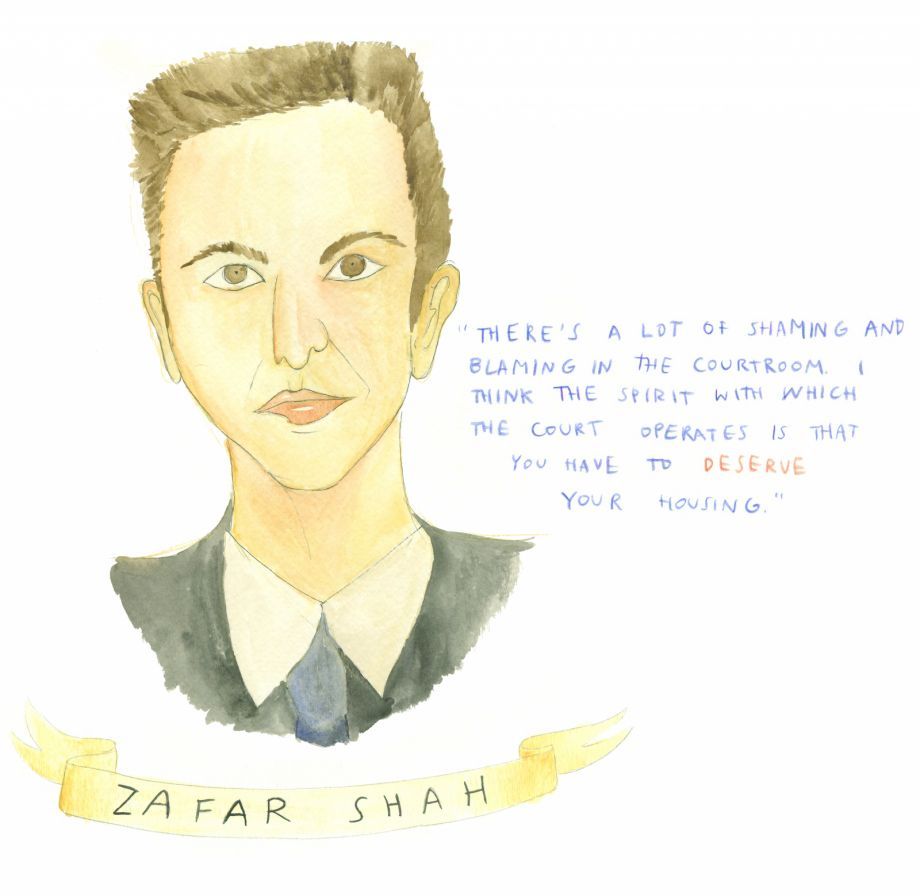
Without a jury or many headline-making cases, civil courtroom proceedings have typically flown under the public’s radar. That is beginning to change. A Department of Justice report issued in the wake of police officer Darren Wilson’s deadly shooting of Michael Brown in Ferguson singled out the Missouri municipal court for “constitutionally deficient” procedures that “undermine the court’s role as a fair and impartial judicial body.”
Now attorneys at the Public Justice Center have teamed up with the Right to Housing Alliance (RTHA), a Baltimore-based human rights organization, and Jews United for Justice (JUFJ), a local activist group, to try and change the frustrating realities of rent court. With $280,000 in grant funding from the Abell Foundation, they hope to lead a court reform initiative and promote greater awareness about housing evictions around the city.
“The bare minimum allowable for any human dignity in the rental housing system is for this court to be fixed,” says Jessica Lewis, an organizer with RTHA.
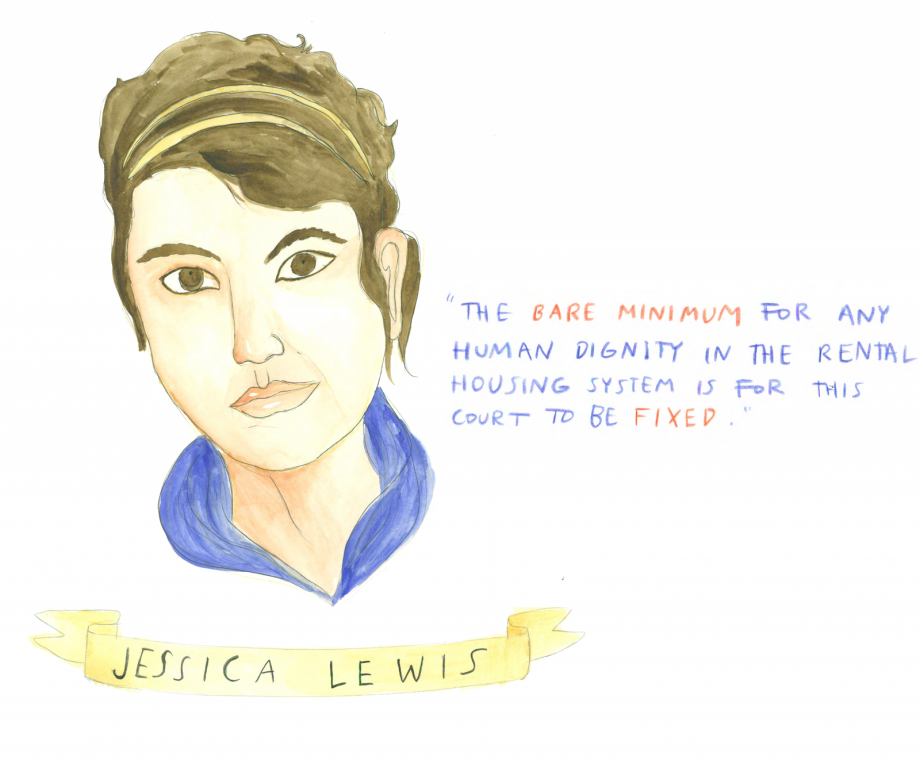
“Our members that go through rent court are just defeated,” she adds. “They feel there is no dignity. It’s just really, really dehumanizing for them.”
Pasciuti, with a team of Johns Hopkins students, has been helping the three organizations conduct surveys and analyze their quantitative data. The goal is to collect meaningful information about what actually happens in rent court. “Our theory is if the public narrative about low-income renters was articulated, presented with numbers, substantiated in a really sound way, and we got it out to the right people, then we can get to a point where there is the political will, and even maybe the business interest to fix this system,” says Shah. The groups hope to go public with a completed dataset of over 300 tenant surveys, augmented by information from the court proceedings and regulatory agencies, later this fall.
In addition to bringing tenant voices into the public discussion, the Public Justice Center also aims to launch a legal strategy, in order to get sufficient clarity about what “rent” means in a residential lease context. Shah says they are considering either a class-action lawsuit or litigating through the appeals process to investigate tricky lease clauses that landlords often use to get more money or to evict tenants.
The activists’ timing might be just right. Scurti, the Baltimore judge frustrated by the lack of good data collection in his court, says he also wants to move toward a formal evaluation of docket patterns to see how the court can operate better. “I want to understand the process and to reevaluate it,” he says. He is particularly interested in figuring out how technology might help the court function more smoothly.Ultimately, all sides agree that the court today is a flawed and inefficient operation. “You’re not going to encounter a judge, or a landlord, or an advocate for tenants who will tell you things are going well,” says Shah. The problem, however, is that improvement means different things for everyone involved. Despite the relative speed at which these cases move, Baltimore landlords, for instance, still feel the whole legal process should be adjudicated much more quickly and with less bureaucracy. Tenant advocates, on the other hand, want increased procedural accessibility and due process.
A promising place to look may be Massachusetts, which has one of the best housing court models in the country. First established in the 1970s, housing court officials in Massachusetts have prioritized creating a system that is accessible to both landlords and tenants.
In addition to a robust legal services community, Massachusetts employs court staff to serve as mediators between landlords and tenants and help them solve disputes without going directly before a judge. According to Paul J. Burke, deputy court administrator, the majority of rental disputes are settled this way. The typical length of a mediation session is around 30 minutes, which can provide a greater sense of dignity than Baltimore’s hasty proceedings. In some cases, mediations can even last for several hours.
Ultimately it comes down to fairness. “From day one back in the early ’70s, it was anticipated that many people would be self-represented, would perhaps be lower-income, and perhaps not have the highest level of educational training,” says Burke. “The policies, the processes and the forms in our courts have always been set up with that in mind.”
Our features are made possible with generous support from The Ford Foundation.
Rachel Cohen is a D.C.-based freelance journalist and a contributing writer for the Intercept.

20th Anniversary Solutions of the Year magazine